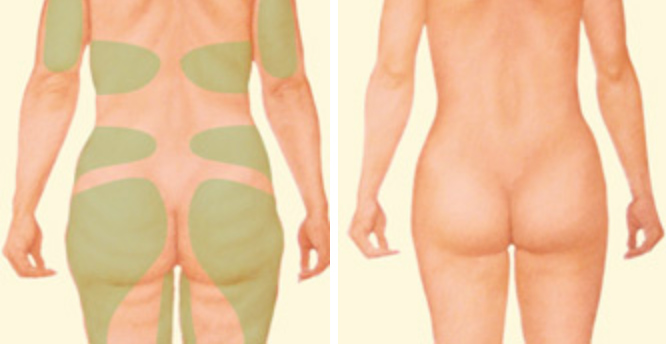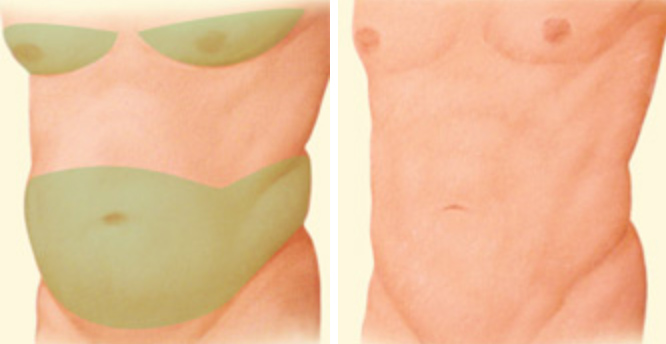Would You Like a Consultation?
Click the button to the right on your mobile phone to be connected with one of our friendly and knowledgeable staff and we will set up an appointment for you!
Also known as lipoplasty, liposuction slims and reshapes specific areas of the body by removing excess fat deposits, improving your body contours and proportion, and ultimately, enhancing your self-image.
Enhancing your appearance with liposuction
Despite good health and a reasonable level of fitness, some people may still have a body with disproportionate contours due to localized fat deposits. These areas may be due to family traits rather than a lack of weight control or fitness.
Liposuction slims and reshapes specific areas of the body by removing excess fat deposits, improving your body contours and proportion, and ultimately, enhancing your self-image.
Liposuction techniques may be used to reduce localized fat deposits of the:
In some cases, liposuction is performed alone, in other cases it is used with plastic surgery procedures such as a facelift, breast reduction or a tummy tuck.
What it won’t do: Liposuction is not a treatment for obesity or a substitute for proper diet and exercise. It is also not an effective treatment for cellulite, the dimpled skin that typically appears on the thighs, hips and buttocks, or loose saggy skin.
What happens during liposuction?
Step 1 Anesthesia
Medications are administered for your comfort during the surgical procedures. The choices include intravenous sedation and general anesthesia. Your doctor will recommend the best choice for you.
Step 2 The incision
Liposuction is performed through small, inconspicuous incisions.
First, sterile liquid solution is infused to reduce bleeding and trauma. Then a thin hollow tube, or cannula, is inserted through these incisions to loosen excess fat using a controlled back and forth motion.
The dislodged fat is then suctioned out of the body using a surgical vacuum or syringe attached to the cannula.
Problem areas that can be addressed with liposuction:




Step 3 See the results
Your improved body contour will be apparent when the swelling and fluid retention commonly experienced following liposuction subside.
With continued practices of healthy diet and fitness, the loss of excess fatty tissue should be permanently maintained. However, substantial weight gain can alter an otherwise permanent result.
The decision to have liposuction is extremely personal and you’ll have to decide if the benefits will achieve your goals and if the risks and potential complications are acceptable.
Your plastic surgeon and/or staff will explain in detail the risks associated with surgery. You will be asked to sign consent forms to ensure that you fully understand the procedure you will undergo and any risks or potential complications.
Possible risks of liposuction include:
Is it right for me?
If you are bothered by excess fat deposits – located anywhere on your body – that don’t respond to diet or exercise, liposuction may be right for you.
Ideal candidates for liposuction are:
Be sure to ask questions: It’s very important to ask your plastic surgeon questions about your liposuction procedure. It’s natural to feel some anxiety, whether it’s excitement for your anticipated new look or a bit of preoperative stress. Don’t be shy about discussing these feelings with your plastic surgeon.
Be careful
Following your physician’s instructions is key to the success of your surgery. It is important that the surgical incisions are not subjected to excessive force, swelling, abrasion, or motion during the time of healing. Your doctor will give you specific instructions on how to care for yourself.
Once your procedure is completed, a compression garment or elastic bandages may cover treatment areas. These help to control swelling and compress the skin to your new body contours.
In addition, small temporary drains may be placed in existing incisions beneath the skin to remove any excess blood or fluid.
You will be given specific instructions that may include: How to care for the surgical site(s), medications to apply or take orally to aid healing and reduce the potential for infection, specific concerns to look for at the surgical site or in your general health, and when to follow up with your plastic surgeon.
A special note: Secondary procedures may sometimes be recommended to reduce excess skin. Special considerations are needed when large amounts – usually more than 5 liters of fat – are suctioned.
When you go home
If you experience shortness of breath, chest pains, or unusual heart beats, seek medical attention immediately. Should any of these complications occur, you may require hospitalization and additional treatment.
The practice of medicine and surgery is not an exact science. Although good results are expected, there is no guarantee. In some situations, it may not be possible to achieve optimal results with a single surgical procedure and another surgery may be necessary.
It may take several months for the swelling to fully dissipate. As it does, your new contours and enhanced self-image should continue to develop.
The fulfillment you feel from the initial results of liposuction should continue as long as you control your weight and maintain a healthy lifestyle.
A significant weight gain can reverse your results. Following liposuction, your slimmer and better-proportioned body should more accurately reflect the healthy and active life you lead.
Cost is always a consideration in elective surgery. Prices for liposuction can vary widely. A surgeon’s cost for liposuction may vary based on his or her experience, the type of procedure used, as well as geographic office location.
Many plastic surgeons offer patient financing plans, so be sure to ask.
Cost may include:
Your satisfaction involves more than a fee
When choosing a plastic surgeon for liposuction, remember that the surgeon’s experience and your comfort with him or her are just as important as the final cost of the surgery.
Most health insurance does not cover cosmetic surgery or its complications.
Click the button to the right on your mobile phone to be connected with one of our friendly and knowledgeable staff and we will set up an appointment for you!